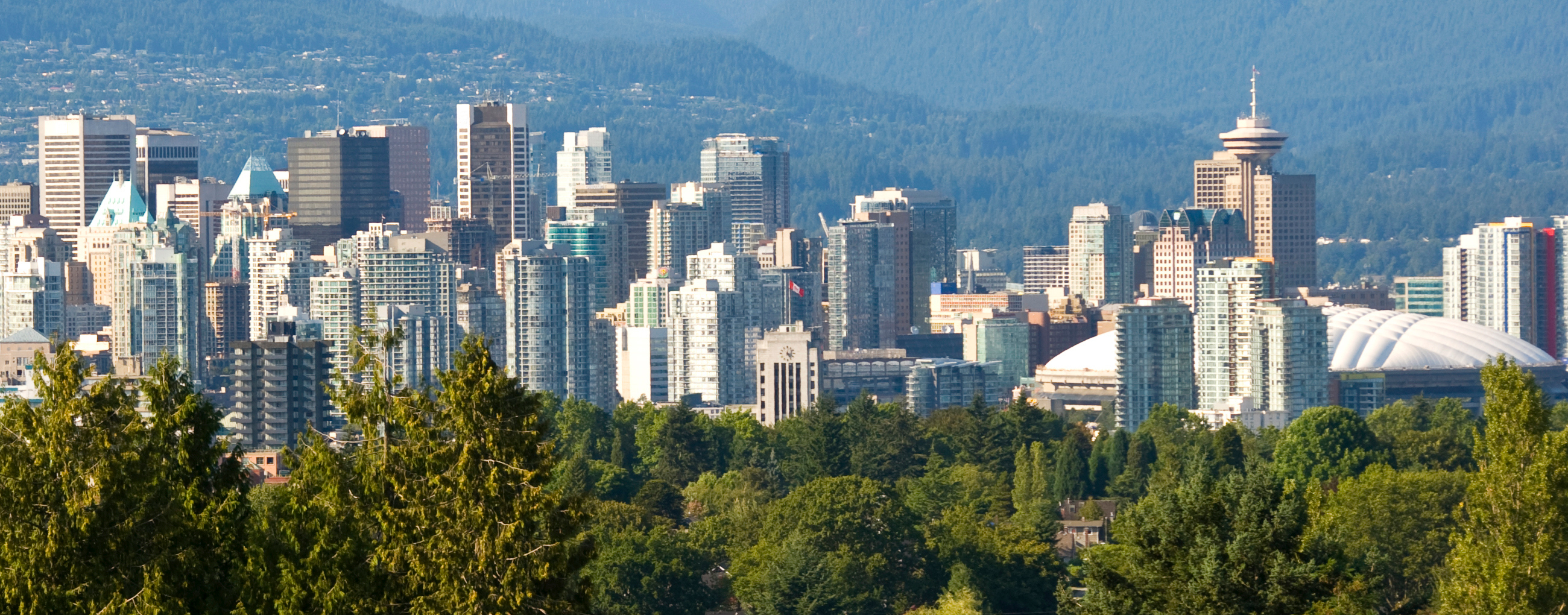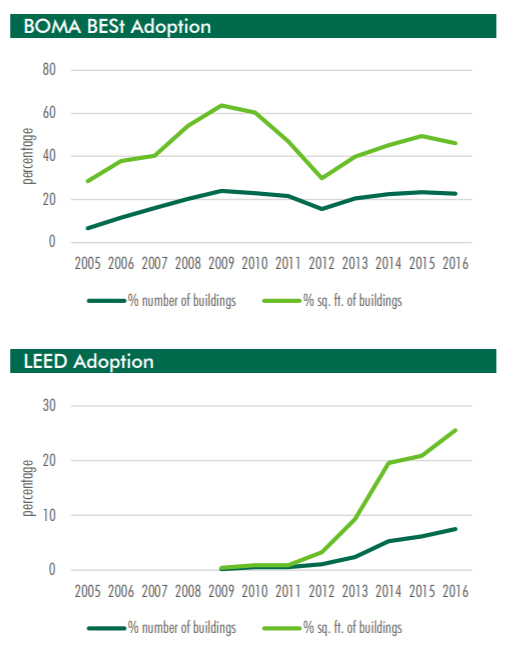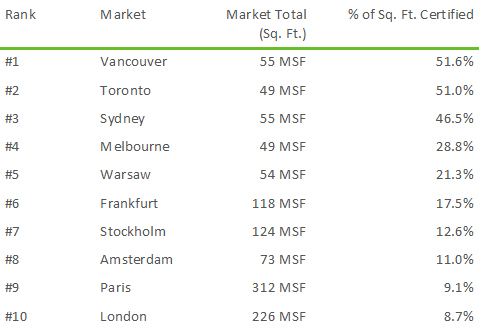
04
July 2018
We set ourselves an ambitious goal of being greenest city by 2020 –and, incredibly, it looks like we’re going to make it.
In our action plan to become the greenest city in the world by 2020, Vancouver so far tops all other cities with the highest percentage of “green office spaces,” according to the recently released, first-ever International Green Building Adoption Index.
This inaugural edition of the Index, prepared by CBRE Group Inc. with Maastricht University in the Netherlands, compares and measures the adoption of green certification programs across several international real estate markets. The report analyzed 10 major cities in Australia, Canada and Europe.
Canada’s two main markets, Vancouver and Toronto, ranked #1 and #2 among the 10 cities studied. Below, we summarize the main reasons why both Canadian cities scored so high.
During 2016 three office buildings were built to the LEED Gold Standard in the suburbs of Vancouver. These office buildings have attracted a diverse range of new tenants, including Intel Corporation, Capcom and the Health Employers Association of BC. These new office developments offer improvements to the physical condition of the workplace (such as better air quality and increased natural lighting) and a competitive advantage when attracting and retaining top-tier talent. It is becoming evident that employees increasingly place a higher emphasis on locating near rapid-transit stations and in areas with a vast range of amenities.
As related in our previous article, “Vancouver: The Greenest City in the World by 2020,” Vancouver is edging closer to accomplishing our ambitious goal. One way is by requiring all new building rezoning approvals to meet a minimum LEED Gold design standard. Seven out of the 14 office buildings currently under construction (1.5 million square feet) are being built to a LEED Gold Standard or higher.
Additionally, 24.3% of office buildings are certified by either BOMA BESt and/or LEED. Converted to square footage, this represents 51.6% of the leasable space!
Still, while the adoption of LEED certification is growing, it still falls behind BOMA BESt. At the end of 2016, 25.6% of office space in Vancouver was LEED-certified, compared to 46.1% of office space certified by BOMA BESt.

Over the last 10 years Toronto has made a significant effort to integrate both LEED- and BOMA BESt-certified office buildings. In 2016, nine office complexes in the Greater Toronto Area became LEED-certified, including the Yonge Corporate Centre, where global brands such as Richardson GMP, Ricoh Canada, SAP, TD Securities, and CIBC Wood Gundy rent office space.
The world’s most powerful brands are improving their corporate image by leasing green office spaces. Many top organizations are leaving their current office spaces for new office developments such as Oxford Properties’ LEED Platinum RBC WaterPark Place, completed in 2014.
As an incentive for other top organizations to stay where they are, owners of existing Class A product downtown are undergoing capital-intensive improvements. These often incorporate green building standards. Scotia Plaza, Canada’s second largest office building and located in the heart of Toronto’s financial district, underwent a CAD $90 million retrofit in advance of nearly 15% of the building becoming vacant in 2017.
In downtown Toronto, LEED-certified buildings command higher net rental rates (CAD 28.46 per square feet) than the downtown average (26.53 per square feet). By the end of 2016, 34% of office space in Toronto was LEED-certified, while 38% of office space was certified by BOMA BESt.

Further reading:
Read more Blogs